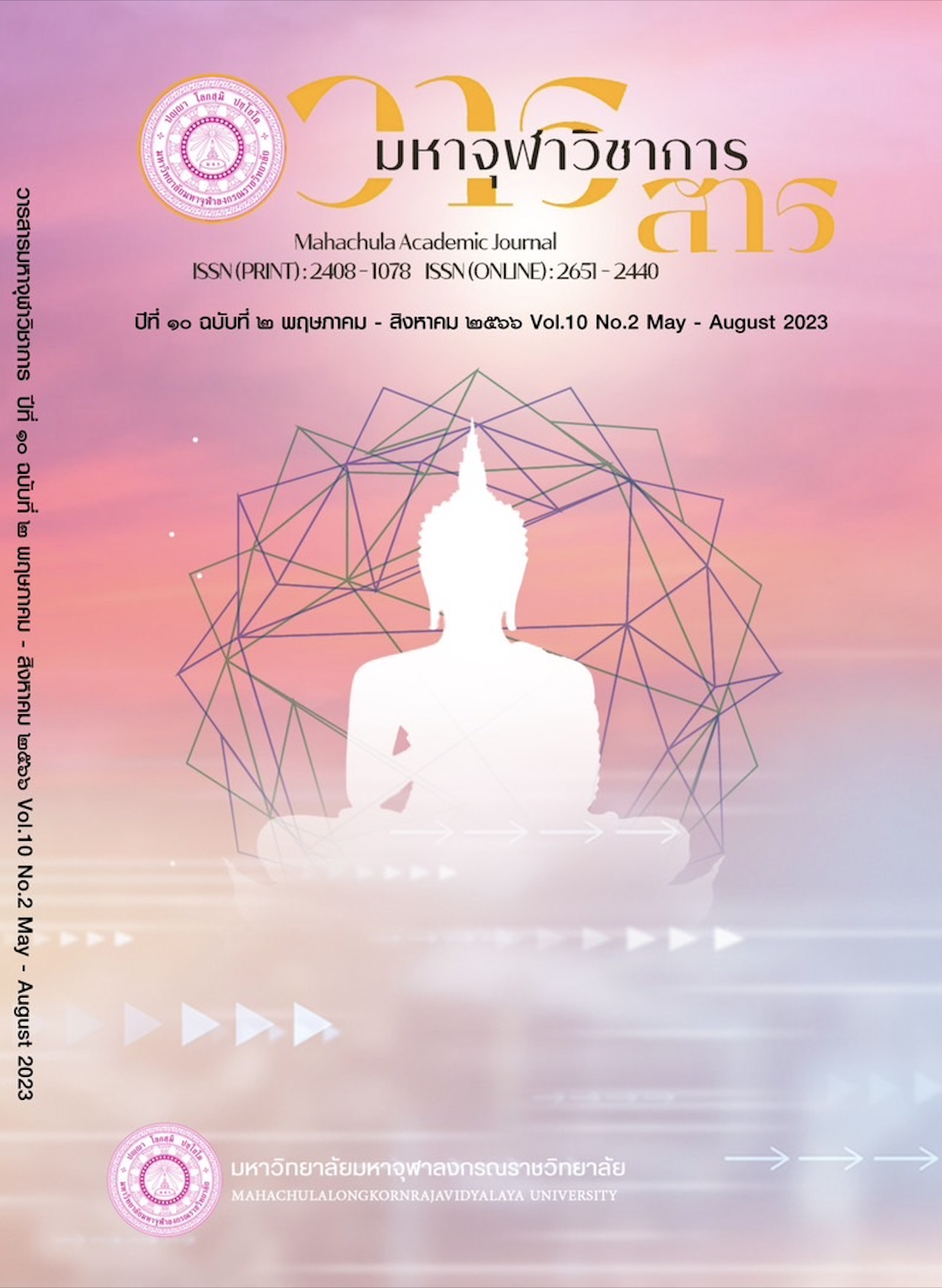The Effect of Plyometric Training Together with SAQ Training on Agility and Leg Strength of Futsal Player
Main Article Content
Abstract
The objective of this research was to study and compare the effects of the Plyometric training together with SAQ training on agility and leg strength of footsal players. The subjects of 30 were purposively sampled from Ratchawinit Bangkaew School footsal player’s age between 13-15 years old. They were divided into 2 equal groups of 15 each based on balance design. For experimental group 1 trained by Plyometric training together with SA training program and experimental group 2 trained by Plyometric training together with AQ training program for eight weeks and three days per week, i.e. Monday, Wednesday, Friday from 4.30 PM to 6.00 PM and collected the data using the Leg Strength Dynamometer test and Arrowhead Agility Drill test before week one and after the experiment in week four and after the experiment in week eight. The data were analyzed by standard deviation, One-Way ANOVA and Two-Way ANOVA with Repeated Measure. If there are statistical differences, the method of Bon Ferroni’s bilateral comparison, would be used.
The results of study revealed the following: (1) The result of repetitive analysis of agility and leg strength of experimental group 1 and group 2 before the test, after week four and week eight were statistically significant at a level of .05 level. (2) When compared the leg strength between two group before the test, after week four and week eight, there were no significant difference. (3) When compared the agility between two group before the test, after week four and week eight, there were statistically significant at a level of .05 level.
Article Details

This work is licensed under a Creative Commons Attribution-NonCommercial-NoDerivatives 4.0 International License.
References
กิตติภูมิ บริสุทธิ์. “ผลของการฝึกความคล่องแคล่วว่องไวต่อการทดสอบตารางเก้าช่องในนักกีฬา เทเบิลเทนนิส”. วิทยาศาสตร์มหาบัณฑิต. บัณฑิตวิทยาลัย: มหาวิทยาลัยเชียงใหม่, ๒๕๕๕.
จักรกฤษณ์ พิเดช. “ผลของการฝึกพลัยโอเมตริกที่มีต่อความแข็งแรงและพลังของกล้ามเนื้อส่วนบนในนักกีฬาวอลเลย์บอลเยาวชนชาย”. ปริญญามหาบัณฑิต. มหาวิทยาลัยราชภัฏเชียงใหม่, ๒๕๖๑.
เจริญ กระบวนรัตน์. เทคนิคการฝึกความเร็ว. กรุงเทพมหานคร: ภาควิชาวิทยาศาสตร์การกีฬา คณะศึกษาศาสตร์ มหาวิทยาลัยเกษตรศาสตร์, ๒๕๓๘.
เจริญ กระบวนรัตน์. วิทยาศาสตร์การฝึกสอนกีฬา (Science of Coaching). กรุงเทพมหานคร: สินธนา ก็อปปี้เซ็นเตอร์, ๒๕๕๗.
ชาญวิทย์ ผลชีวิน. คู่มือการฝึกสอนกีฬาฟุตบอล. กรุงเทพมหานคร: กองวิชาการการกีฬา การกีฬาแห่งประเทศไทย, ๒๕๕๘.
ดวงพร ศรีเหรา. “ผลของการฝึกความคล่องตัวในนักกีฬาฟุตบอล”. วิทยาศาสตร์มหาบัณฑิต. บัณฑิตวิทยาลัย: มหาวิทยาลัยศรีนครินทรวิโรฒ, ๒๕๕๙.
เทอดทูล โตคีรี. “ผลการฝึกด้วยโปรแกรมเอส เอ คิว ที่มีต่อความคล่องแคล่วว่องไวและความสามารถในการเลี้ยงลูกฟุตซอลของนักกีฬาฟุตซอลระดับอุดมศึกษา”. The Golden Teak : Humanity and Social Science Journal (GTHJ). ปีที่ ๒๔ ฉบับที่ ๕ (พฤศจิกายน-ธันวาคม ๒๕๖๑) : ๗๐-๘๐.
ประพันธ์ เปรมศรี และไมตรี กุลบุตร. ประวัติและกติกา การตัดสินกีฬาฟุตซอล. กรุงเทพมหานคร: คณะพลศึกษา มหาวิทยาลัยศรีนครินทรวิโรฒ, ๒๕๔๘.
ปราชญ์ อัคคะสาระกุล. “ผลของการฝึกพลัยโอเมตริกในน้ำที่มีต่อพลังกล้ามเนื้อขาและความคล่องแคล่วว่องไวในนักกีฬาบาสเกตบอลชายระดับมหาวิทยาลัย”. ปริญญานิพนธ์ครุศาสตรมหาบัณฑิต. คณะครุศาสตร์: จุฬาลงกรณ์มหาวิทยาลัย, ๒๕๕๕.
ปิยะมาศ ชมภูมิ. “ผลของการฝึกรูปแบบเอส เอ คิวที่มีต่อความคล่องตัวของนักกีฬารักบี้ฟุตบอล”. วิทยาศาสตร์มหาบัณฑิต. บัณฑิตวิทยาลัย: มหาวิทยาลัยศรีนครินทรวิโรฒ, ๒๕๕๙.
สกายสปอร์ททีม. ฟุตซอล รวมกฏ กติกา และพื้นฐานการเล่น เหมาะสำหรับนักเรียน นิสิต นักศึกษา บุคคลทั่วไป. กรุงเทพมหานคร: บริษัทสกายบุ๊กส์ จำกัด, ๒๕๕๐.
บุญส่ง นครสวรรค์. “หลักพื้นฐานในการฝึกซ้อม”. [ออนไลน์]. แหล่งที่มา: htp://www.bangkhunthianjoggingclub.com [๒๒ มีนาคม ๒๕๕๗].


